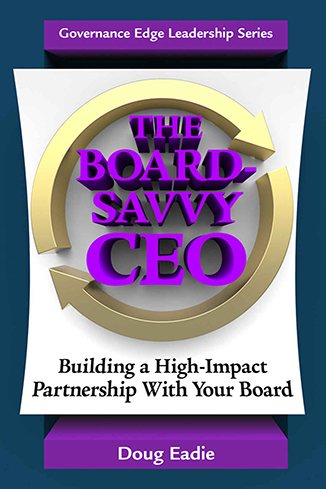 While preparing for a four-hour Zoom work session a couple of weeks ago with the chief executive and executive team of a nonprofit economic development corporation, focusing on preparation for the launch of a new board committee structure, I reflected on a seminal learning experience early in my career, when I was chief of staff to the president of a three-campus urban community college district. How fortunate I was to learn such an important lesson so early in my professional journey that has served me well in the ensuing years! Here’s the story in a nutshell.
While preparing for a four-hour Zoom work session a couple of weeks ago with the chief executive and executive team of a nonprofit economic development corporation, focusing on preparation for the launch of a new board committee structure, I reflected on a seminal learning experience early in my career, when I was chief of staff to the president of a three-campus urban community college district. How fortunate I was to learn such an important lesson so early in my professional journey that has served me well in the ensuing years! Here’s the story in a nutshell.
Over the course of the three years he chaired the community college board’s Strategic and Operational Planning Committee, Bart – a highly successful shopping mall developer, owner of one of the city’s four professional sports teams, and a generous philanthropist – became one of the board’s most dedicated and productive members. And he was also one of the president’s most stalwart supporters and spear carriers during his ten years on the college board.
A couple of months before the governor appointed Bart to the college board, the board had voted to implement a new standing committee structure aligned with the broad streams of governing decisions and judgments (planning, performance monitoring, external relations), replacing the old-time “silo” committees that had lured board members into the weeds of micro-management (curriculum and instruction, personnel, facilities, and the like). The president knew that the first chairs of the new committees would need to be outstanding leaders who commanded their fellow board members’ respect if the new committees were to be well-established enough to withstand the inevitable pressure of some old-time board members to revert to the dysfunctional silo structure (unfortunately, as my readers no doubt know, micro-managing can be satisfying as well as addictive). So it made the best of sense for the president to convince Bart to chair the committee that was to extricate the board from the weeds in the extremely important annual operational planning/budget development function.
That Bart was a great choice to head the Strategic and Operational Planning Committee was obvious during his first term as chair, when he brought the following year’s annual operating plan and budget to the board. In prior years, the college president and his CFO had taken the proposed budget to the board, only to have the majority of board members pick, pick, pick at minor objects of expenditure such as staff travel over the course of interminable, excruciating work sessions. Getting the budget adopted had always been an exhausting challenge that forced the president to put his line of credit with the board at risk. No more! Bart and his Strategic and Operational Planning Committee colleagues, took the lead in presenting the budget document – peers presenting to peers – keeping major policy questions at the forefront and nipping nit-picking in the bud.
Indeed, a capable, committed, and widely respected chair is one of the lynchpins of a new board standing committee’s success as a “governing engine.” But there’s another, as the president wisely recognized: the designation of a member of his cabinet to serve as what we called “Chief Staff Liaison” to each of the new committees, providing the committee chair with the support necessary to ensure his or her success at the helm of the committee. I sat in on the president’s initial meeting with his newly appointed Chief Staff Liaison to the brand-new Strategic and Operational Planning Committee, when he shared his expectations. Here’s what he said, in so many words:
“In a nutshell, I want you to promise me that the Strategic and Operational Planning Committee:
- Hits the ground running next month, with a robust agenda that Bart is well-prepared to lead the committee through.
- Is solidly established and credible by the third round of committee meetings.
- Provides Bart with a really satisfying experience as chair of the committee.”
He went on to describe the Chief Staff Liaison’s functions: developing agendas for the following month’s committee meetings; reviewing the agendas with her cabinet colleagues and with the committee chairs; overseeing the development of high-quality supportive documentation for each committee meeting; making sure the committee chair is well-prepared to lead committee deliberations; and preparing the committee reports for the full board meeting.
During my years as the president’s chief of staff I learned a lesson that has served me well as a nonprofit/public governance advisor: a strong committee chair paired with a strong Chief Staff Liaison are the lynchpins of a high-performing board committee structure. It’s a lesson I’ve re-learned numerous times over the past 30-plus years.





